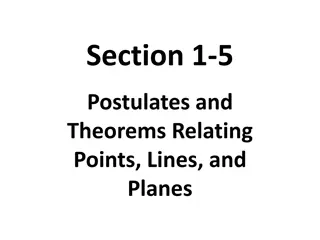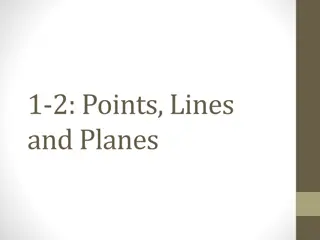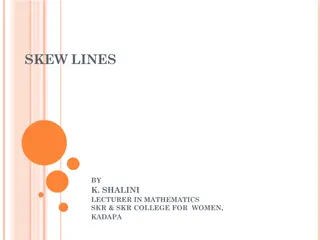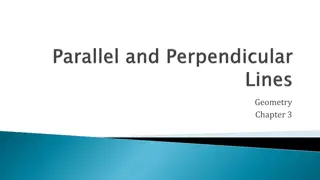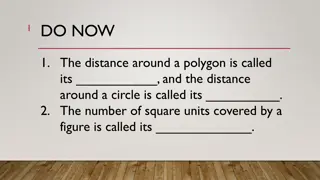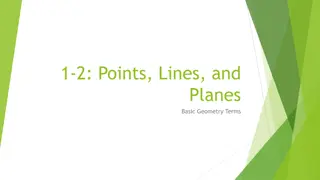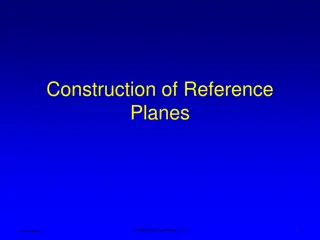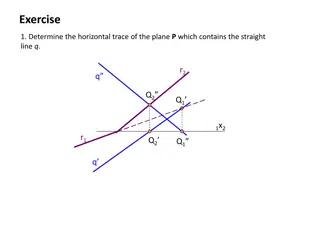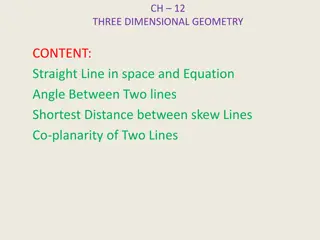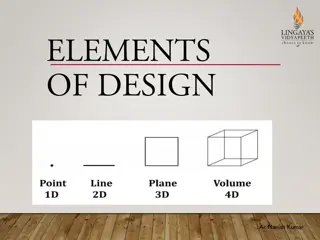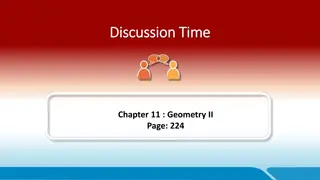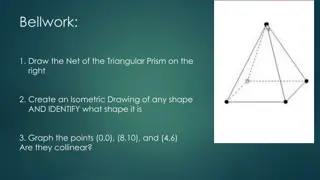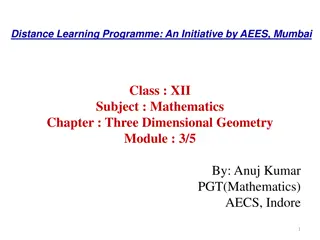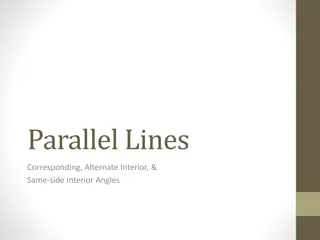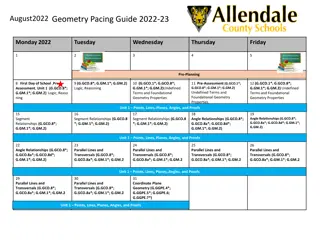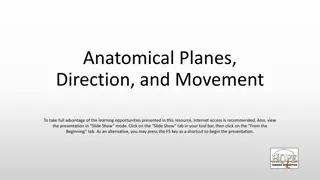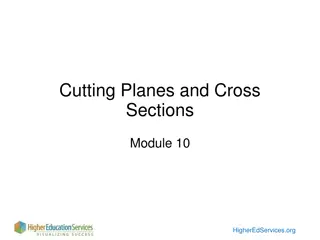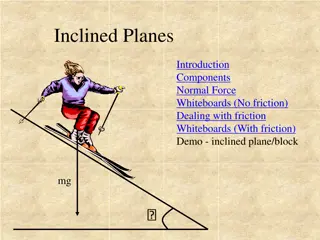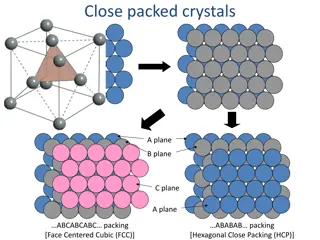Understanding Points, Lines, and Planes in Geometry
Explore the fundamental concepts of points, lines, and planes in geometry. Learn how to name them, identify collinear points and coplanar elements, understand segments and rays, and delve into the intersections of planes through postulates. Enhance your geometric knowledge with clear definitions, diagrams, and practical problem-solving tasks.
Download Presentation

Please find below an Image/Link to download the presentation.
The content on the website is provided AS IS for your information and personal use only. It may not be sold, licensed, or shared on other websites without obtaining consent from the author. Download presentation by click this link. If you encounter any issues during the download, it is possible that the publisher has removed the file from their server.
E N D
Presentation Transcript
1-2 Points, Lines, and Planes
Undefined Terms Term Description How to Name it Diagram Point: indicates a location and has no size Point A OR ? A Line: represented by a straight path that extends in two opposite directions without end and has no thickness. A line contains infinitely many points Name a line by any two points on the line: ?? or ?? m B Or by a single lowercase letter such as line m A Plane: represents a flat surface that extends without end and has no thickness. A plane contains infinitely many lines Name a plane by a capital letter, such as plane P B P Or by at least three points in the plane that do not lie on the same line, such as plane ABC C A
Collinear Points: Points that lie on the same line Coplanar: Points and lines that lie in the same plane All points of a line are coplanar!
Defined Terms Term Description How to Name it Diagram B Segment: part of a line that consists of two endpoints and all the points between them Name a segment by its two endpoints: ?? or ?? A Ray: part of a line that consists of one endpoint and all the points of the line on one side of the endpoint Name a ray by its endpoint and another point on the ray: ?? (read ray AB ). The order of the points indicates the ray s direction B A Opposite Rays: two rays that share the same endpoint and form a line Name opposite rays by their shared endpoint and any other point on each ray: ?? ??? ?? B C A
Problem 2: Naming Segments and Rays What are the names of the segments? What are the names of the rays? Which of the rays are opposite rays? Are ?? ??? ?? opposite rays?
DAY 2: Points, Lines, and Planes Continued
Problem 3: Finding the intersections of Two Planes Postulate (axiom): an accepted statement of fact. They are basic building blocks of the logical system in geometry (to prove general concepts)
Side note: when you know two points that two planes have in common, Postulate 1-1 and 1-3 tell you that the line through those points is the intersection of the planes.
Each surface of the box represents part of a plane. What is the intersection of plane ADC and plane BFG? When you name a plane from a figure like this box, list the corner points in consecutive order. EX: plane ABCD and plane ADCB are names for the top plane but plane ACBD is not!!
What are the names of the two planes that intersect in ??? Why do you only need to find two common points to name the intersection of two distinct planes?
What plane contains points N, P, and Q? Shade the region.
What plane contains points J, M and Q? Shade the region.
What plane contains points L, M and N? Shade the region.
What is the name of a line that is coplanar with ?? ??? ???


